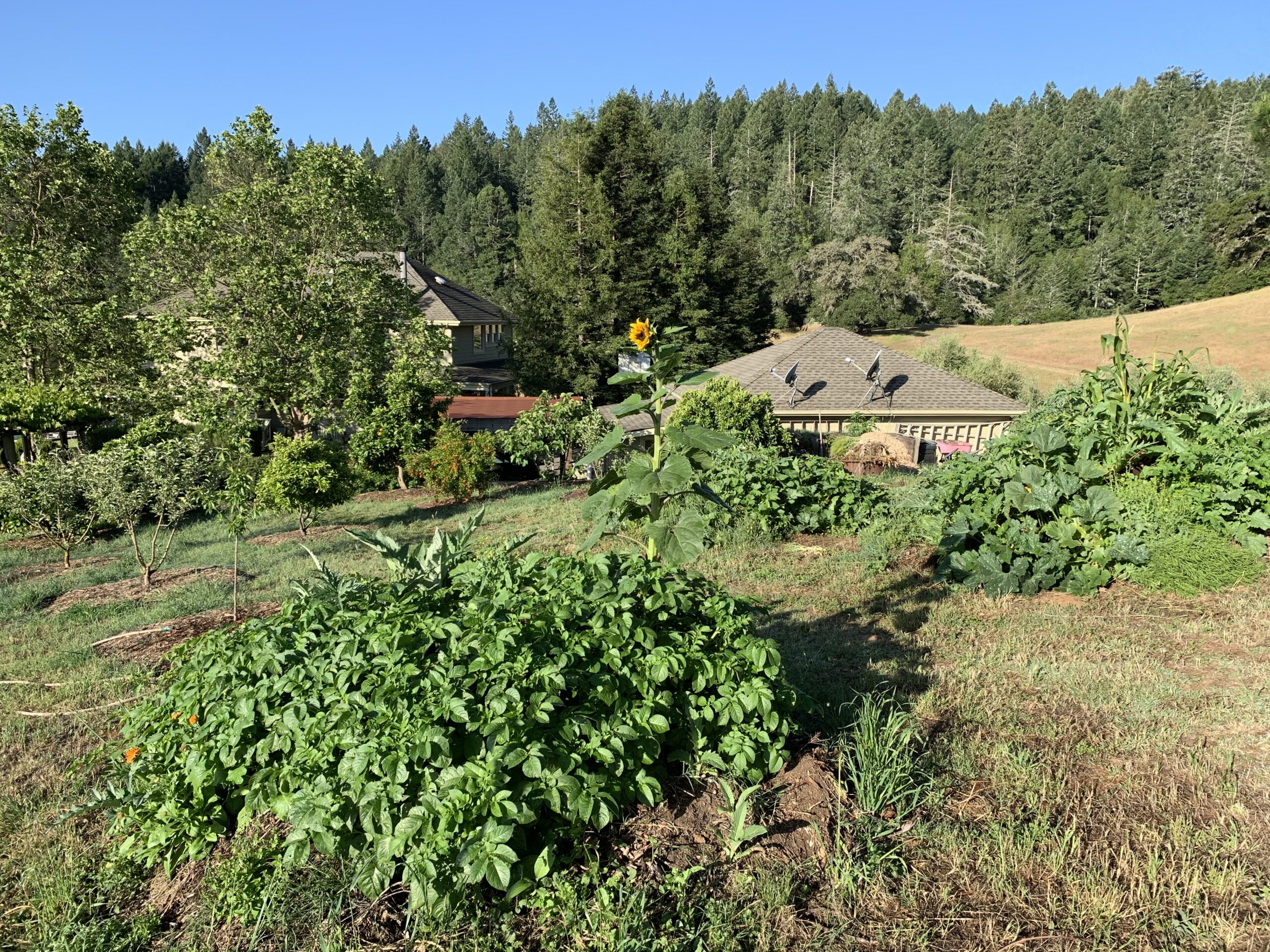
I’ve just completed a full year of monthly interviews for the podcast about creativity, which calls for a self assessment of sorts. My grandfather, Howard Imhoff, was a painter and an art teacher. Apparently he used to tell his students that only the masters deserved an A and he would give himself a B. I give myself a B: “not too shabby but with plenty of room for improvement.”
The name Full Expression came from something my friend, Michael Presley, said to me many years ago. He is a serious garden farmer who works fourteen hours a day and we were walking through some raised rows and stopped at a fava bean cover crop. According to Michael, Rudolph Steiner, the father of biodynamic farming — of which Michael is a practitioner — said that plants should be allowed to go to seed so that they can fully express their true biological nature. I took this to heart and began letting all the vegetables and flowers and cover crops in my garden go to seed. In a few years my chosen domesticated plants had become “weeds.” When we came home from Spain and began the Covid isolation in March 2020 we were eating potatoes, zucchini, lettuces and all kinds of other things that had volunteered in our compost piles and garden beds. The sunflowers, calendulas, cardoons and matilija poppies had likewise spread with abandon across the homestead.
Creativity should work this way. As so many of my guests from Season One of Full Expression confirmed, the practice is the art. It’s not that finishing doesn’t matter. But most essential is that you become what you practice during the countless hours when you are actively engaged in the creative struggle for full expression.
I learned a great many things from last year’s conversations. Episode 8 guest Jessica Martin talked about a vocabulary of shapes she has been developing over many decades. She also spoke of the self doubt that often accompanies her creative process. These resonate with me as I know it takes me at least a decade to achieve mediocrity at almost anything. A few months after our interview, Jessica was featured in the New York Times for a project she started with elementary school students — a call line where they can receive pep talks and advice from their peers to help them through these challenging times.
In Episode 3 chef and cookbook author Abra Berens told us that some of her inspiration for flexible menus came from one of her favorite clothing designers who made a dress that could be folded a dozen different ways. Laura Guido-Clark explained that studies show how color waves permeate the skin of the blind, altering their moods. This is just an inkling of the power of color. Photographer J Henry Fair advised activists to have a distribution plan and marketing budget before embarking on a communication campaign in order to successfully get the word out beyond their own echo chambers. Ames Morrison and I talked about how long wine making has been an integral part of our collective human experience. (Much longer than skis which have been around for many thousands of years with remarkably high levels of craftsmanship!)
Just the other day I was walking down Caller Sueca in my adopted neighborhood of Valencia Spain. I came across a large poster advertising the Killers as part of a three-day music festival coming to the city this summer. Their drummer, Ronnie Vannucci, was featured in Episode 4. In fact, he was the person who convinced me to try out this podcast idea in the first place. Among many topics we touched on, Ronnie spoke to me about the need for more communication as a critical and often lacking ingredient in the band dynamic.
How can I forget Alam Khan’s story about his grandfather tying his hair to the ceiling so he would be yanked back to consciousness to return to practicing the sarode. Or Tim Weed playing banjo with the orchestra in an old movie studio. Adam Wolpert painting thousands of branches only to discover that the exercise was as much about himself as it was about making a portrait of an oak tree. Chris Blum describing his film work with Tom Waits as eating the most incredible piece of candy, Shea Breaux Wells’ amazing singing in the Llama Shed and PC Muñoz playing his rhythm stick.
There were times when I didn’t have a clue what I was talking about, which is humbling and inherent to the interviewing process. The truth is that I have always wanted to know how someone does something that I am interested in, not just at a shallow or primitive level, but how to be extremely good at it. And I have been pursuing most of the same interests for most of my adult life.
All of these things and a whole lot more are telling me that Full Expression is right on track. I want to thank all of my guests from Season 1 for taking the time to talk with me and for sharing their amazing stories and insights. I’d also like to thank Roberto Carra for our artwork and Patrick Sexton for our audio production.
I promise we will continue to improve and evolve. Look for Season 2 late this summer or in early fall 2022. In the mean time, may the seeds of your efforts become the weeds of whatever you choose to do with your precious time. And thanks so much for listening.

